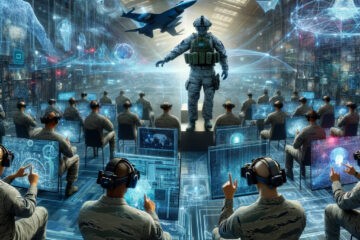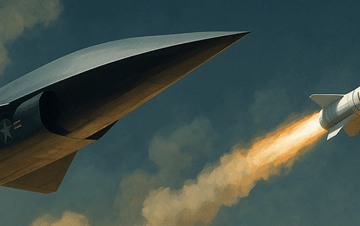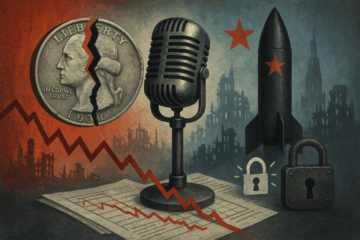The growing violence in the Democratic Republic of the Congo is the latest in a series of decades-long bloody conflicts.
The ongoing humanitarian crisis in the Democratic Republic of the Congo (DRC) has been described by the U.N. as the “highest level of emergency;” comparable with Yemen, Syria, and Iraq.
In January 2018 Jean-Pierre Lacroix, the head of U.N. peacekeeping operations, informed the Security Council of the recently deteriorating situation and the urgent need to bolster peacekeeping efforts within the country. However, in contrast to the latter crises, the ongoing conflict in the DRC has received far less attention from international media platforms.
Since 2016, at least 3000 civilians have been killed and a further 1.4 million displaced. A catalyst for this conflict has been significant public resistance to the rule of President Joseph Kabila. In June 2016, a traditional chief within the central Kasia region called for a popular uprising against the government and state institutions.
Following the chief’s death two months later, the result of a police raid, civil unrest escalated to a disturbing level unprecedented in recent years; including the alarming re-emergence of child soldiers.
The grievances voiced over President Kabila’s rule, which caused the initial protests earlier that year, intensified in December 2016 when the president refused to step down after his five-year term concluded.
Despite the earlier implementation of the United Nations Organization Stabilization Republic Mission in the Democratic of the Congo (MONUSCO), with a mandate aimed at protecting civilians, humanitarian personnel and stabilizing the government, civil conflict has continued to rise.
The current escalation in violence in the DRC is the latest in a series of bloody civil conflicts dating back to the mid-1990s.
The Second Congo War (1998-2003) was the deadliest conflict globally since the Second World War, resulting in 5.4 million deaths. The nature of violence was so extreme that children under the age of five were the hardest hit, accounting for almost half of all those killed.
The scale of the war was so vast that it destabilized the entire region, as foreign armies and rebel groups fought for control over the country’s natural resources; recently estimated to be worth more than $24 trillion.
The conflict, exacerbated by endemic corruption, forced millions to flee their homes, further destabilizing the region. The ongoing failure of the DRC security forces to prevent the humanitarian crisis has continued to this day.
The inherent weakness of those forces to protect civilians ultimately led to U.N. Resolution 1279, and the creation of the United Nation Organization Mission in the Democratic Republic of the Congo (MONUC).
Charged with the observation of the Lusaka Ceasefire Agreement, it was replaced in 2010 by the current MONUSCO mission, which as previously stated was to ensure the protection of civilians.
The latest manifestations of the conflict witnessed since 2016, have highlighted the glaring failures of the current U.N. mission in achieving that mandate.
The Failures and Shortcomings of U.N. Peacekeeping Forces
In addition to being unable to fulfill its overall purpose, the latest U.N. mission has endured considerable losses; most recently the deaths of 15 Tanzanian peacekeepers in December 2017; in total, U.N. peacekeeping missions in the DRC have suffered the loss of 93 personnel.
A U.N. report from March 2018 investigating these deaths highlighted shortcomings in the training of its troops as a significant causal factor. Although contributing substantial troop numbers, the majority of the MONUSCO assisting militaries are from developing states themselves, inevitably posing limitations to the overall capability of the mission.
Despite some of these contributing states, specifically Tanzania, offering evident military strengths such as regional expertise, those forces do not provide the mission access to the technological military resources required by the mission’s efforts. For example, UAV surveillance technology has already been requested as a necessity. A further weakness of the current U.N. peacekeeping mission is the sizable reduction to its budget announced by the U.S. in 2017.
The ongoing conflict is by its nature a complex and fragmented issue which can only be resolved through a multi-dimensional approach, encompassing transformations in international assistance and new efforts which tackle corruption and the under-resourced security forces.
International Economic Legislation Exacerbates Destabilization in the DRC
Disconcertingly, the international economic legislation spearheaded by the Obama Administration, compels many corporations to avoid mineral extraction in conflict-prone areas.
While initially supported by the international community, this measure, known as the broader U.S. economic reform the Dodd-Frank Act, has propelled millions of miners and their families deeper into poverty. As a direct result of reduced employment prospects for miners, destabilization has increased.
The growing unemployment has encouraged individuals to join the ranks of militias involved in the DRC conflict, exacerbating local corruption; DRC security forces themselves have routinely been involved in mineral extraction and subsequent smuggling into neighboring countries.
By some estimates, $400 million dollars in gold was smuggled out by militias the year after the U.S. legislation was passed. Although the negative impact on regional turbulence may be reduced with a redress of economic policy from the international community, the civil unrest has already generated long-term security issues for the European continent.
Recommendations for Policymakers
A 2017 Gallup Poll highlighted how in 2016, 50% of people within the DRC wished to migrate, accounting for approximately 40 million people. As recent migratory trends suggest, this would unequivocally place further strain on southern Europe. To prevent the danger of a mass exodus of the Congolese population, presenting a catastrophic risk to the DRC and the European continent alike, it is essential that the international community now provides a more suitable and capable approach to dealing with the increasing civil unrest within the country.
With the need for a more comprehensive approach, aimed at increasing the operational effectiveness of the current peacekeeping mission and alleviating the obstructive effect of the economic legislation, there leaves an opportunity for NATO’s recently operationalized Southern Hub.
This new facility, located in Naples, Italy, has been charged with the mandate of responding more effectively to security challenges beyond Europe’s southern boundary. This strategic aim is supported by leading European Security experts; Carnegie Europe claims that NATO is obligated to mitigate the consequences of security threats facing state failure.
The July 2018 NATO Summit has solidified the geopolitical climate for a NATO-led training mission to the DRC, aimed at the protection of civilians through the development of the DRC security forces. Secretary-General Jens Stoltenberg highlighted the need for “a package of additional measures for the South.”
The increased deployment of short-term training teams by NATO members has proven highly effective in increasing the operational capabilities of European-allied states across Africa, including Uganda, Kenya, Somalia, Mali, Nigeria and Sierra Leone.
Such training missions, often small enough in number to ensure political sustainability, enhance regional stability by increasing the capabilities of the local security forces themselves. This is in direct contrast to the hands-on approach witnessed by the U.N. peacekeepers, resulting in the significant death toll. As previously discussed, issues of civil unrest in the DRC require attention in various areas, with a particular emphasis for future missions potentially placed on anti-smuggling.
Of course, to address the root causes of the conflict, a unilateral security approach will not counter essential issues such as high unemployment, large-scale corruption and lack of social mobility. However, what a proposed NATO-led training mission would deliver is a hopeful reduction in the high figure of peacekeeping fatalities and an improvement in the local security situation in the DRC.
This would subsequently improve the security situation currently facing Europe’s Southern flank. With Europe’s politicians having only recently managed to implement systems to reduce the high levels of migration to the continent, a new migrant crisis numbering several million refugees fleeing this latest conflict presents a threat to European security which cannot be ignored.



